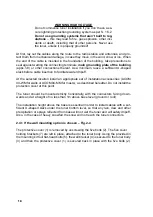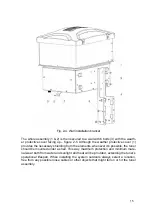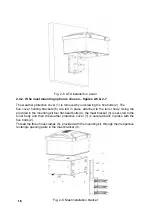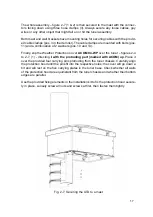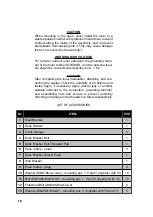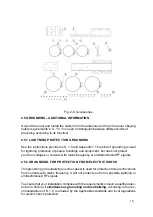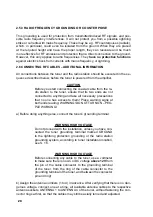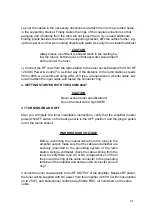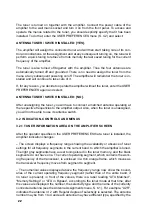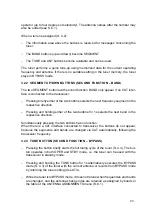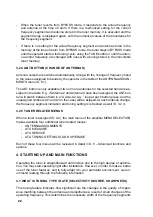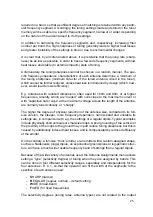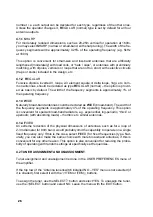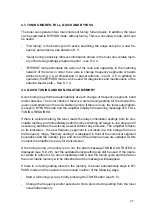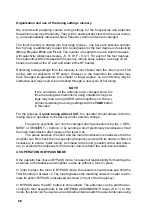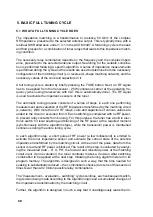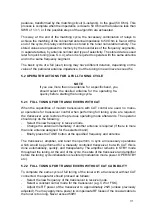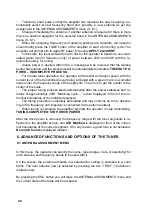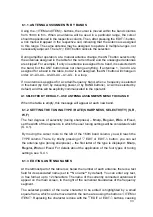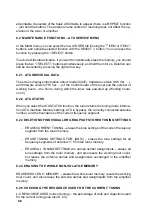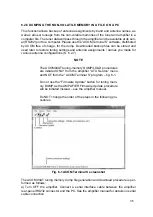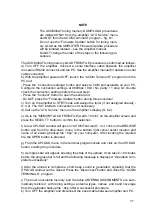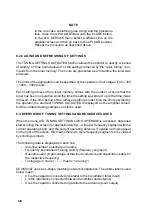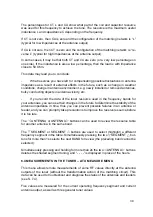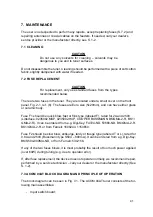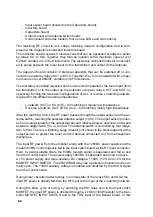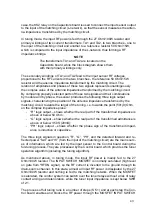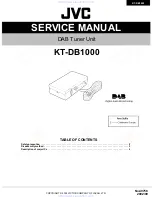
28
28
Organization and use of the tuning settings memory
We recommend preparing custom tuning settings for the frequencies and antennas
that will be used most frequently. They will be automatically stored in the tuner memo
-
ry, and automatically retrieved when a frequency and/or antenna is changed.
The tuner memory is divided into four large groups – one per each antenna number.
Each group is additionally divided into 4 subgroups for the four degrees of selectivity
(
S
harp,
R
egular,
W
ide and
F
ixed). The number of segments in each band increases
with selectivity (sharpness degree - S, R, W, F - S.4.1). For each of the four degrees
the segments width increases with frequency, aiming same relative coverage on all
bands (narrower at the LF end and wider at the HF bands).
Retrieving tuning settings from the memory is much faster than the main cycle of full
tuning, with no emissions of RF power. However, in the meantime the antenna may
have changed its parameters to a smaller or larger degree, so an old tuning may be
ineffective and may need to be refreshed through a new cycle of full tuning.
NOTE
If the conditions at the antenna have changed since the
time the tuning was memorized, using outdated tuning set-
tings may lead to a high SWR at the amplifier end. We rec
-
ommend updating the tuning settings with the
TUNE
button
in this case.
For the purpose of
quick tuning
without CAT
, the operator should adhere to the fol-
lowing rules of operation for frequency and/or antenna change:
-
Frequency segments can only be changed during reception using the
SEG-
MENT or SEGMENT
buttons or by sending a short preliminary transmission. Start
the main transmission after a pause of at least 0.5s.
-
The pause between the short and the main transmission is needed so that the
amplifier can first check the new operating frequency and switch its harmonic filters if
necessary, to send a “quick tuning” command to the tuner (possibly with a new anten
-
na), to evaluate the response from the tuner and to refresh the onscreen indication.
4.5 OPERATION IN BYPASS MODE
If the operator has chosen BYPASS mode, he takes full responsibility for matching the
antennas to the feedline and amplifier - same as without a tuner in place.
In order to place the tuner in BYPASS mode, the operator should press and hold the
TUNE button for at least 1s. The tuner bypasses the matching network in order to elim
-
inate its action. BYPASS is displayed onscreen (in front of the frequency).
In BYPASS state, the ANT button is still enabled. The antennas can be switched ac
-
cording to their assignments in the ANTENNA ASSIGNMENTS menu (S. 6.1). In this
mode, the tuner can be used as an automatic antenna switch to select antennas using
Summary of Contents for ACOM 04AT
Page 1: ...1 ...
Page 57: ...2 2 ...

